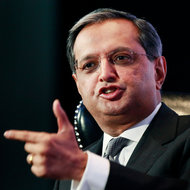“This is a good place to hunt,” she told me. “I always have good luck here.”
For Ms. Yang, Joy City is not so much a consumer mecca as an urban Serengeti that she prowls for potential wives for some of China’s richest bachelors. Ms. Yang, 28, is one of China’s premier love hunters, a new breed of matchmaker that has proliferated in the country’s economic boom. The company she works for, Diamond Love and Marriage, caters to China’s nouveaux riches: men, and occasionally women, willing to pay tens and even hundreds of thousands of dollars to outsource the search for their ideal spouse.
In Joy City, Ms. Yang gave instructions to her eight-scout team, one of six squads the company was deploying in three cities for one Shanghai millionaire. This client had provided a list of requirements for his future wife, including her age (22 to 26), skin color (“white as porcelain”) and sexual history (yes, a virgin).
“These millionaires are very picky, you know?” Ms. Yang said. “Nobody can ever be perfect enough.” Still, the potential reward for Ms. Yang is huge: The love hunter who finds the client’s eventual choice will receive a bonus of more than $30,000, around five times the average annual salary in this line of work.
Suddenly, a signal came.
From across the atrium, a co-worker of Ms. Yang caught her eye and nodded at a woman in a blue dress, walking alone. Ms. Yang had shaken off her colleague’s suggestions several times that day, but this time she circled behind the woman in question.
“Perfect skin,” she whispered. “Elegant face.” When the woman walked into H M, Ms. Yang intercepted her in the sweater aisle. “I’m so sorry to bother you,” she said with a honeyed smile. “I’m a love hunter. Are you looking for love?”
Three miles away, in a Beijing park near the Temple of Heaven, a woman named Yu Jia jostled for space under a grove of elms. A widowed 67-year-old pensioner, she was clearing a spot on the ground for a sign she had scrawled for her son. “Seeking Marriage,” read the wrinkled sheet of paper, which Ms. Yu held in place with a few fragments of brick and stone. “Male. Single. Born 1972. Height 172 cm. High school education. Job in Beijing.”
Ms. Yu is another kind of love hunter: a parent seeking a spouse for an adult child in the so-called marriage markets that have popped up in parks across the city. Long rows of graying men and women sat in front of signs listing their children’s qualifications. Hundreds of others trudged by, stopping occasionally to make an inquiry.
Ms. Yu’s crude sign had no flourishes: no photograph, no blood type, no zodiac sign, no line about income or assets. Unlike the millionaire’s wish list, the sign didn’t even specify what sort of wife her son wanted. “We don’t have much choice,” she explained. “At this point, we can’t rule anybody out.”
In the four years she has been seeking a wife for her son, Zhao Yong, there have been only a handful of prospects. Even so, when a woman in a green plastic visor paused to scan her sign that day, Ms. Yu put on a bright smile and told of her son’s fine character and good looks. The woman asked: “Does he own an apartment in Beijing?” Ms. Yu’s smile wilted, and the woman moved on.
The New Matchmaking
Three decades of combustive economic growth have reshaped the landscape of marriage in China. A generation ago, China was one of the world’s most equal nations, in both gender and wealth. Most people were poor, and tight controls over housing, employment, travel and family life simplified the search for a suitable match — what the Chinese call mendang hudui, meaning roughly “family doors of equal size.”
Article source: http://www.nytimes.com/2013/03/10/business/in-a-changing-china-new-matchmaking-markets.html?partner=rss&emc=rss
